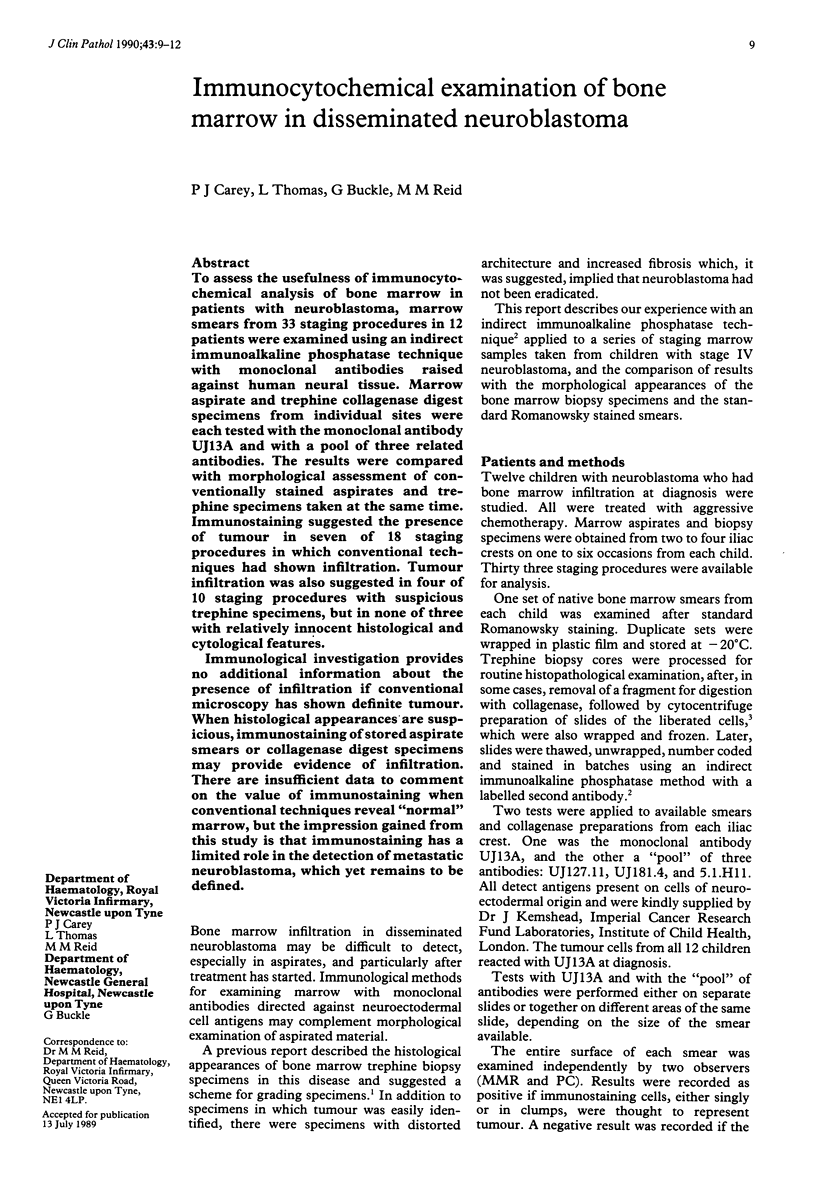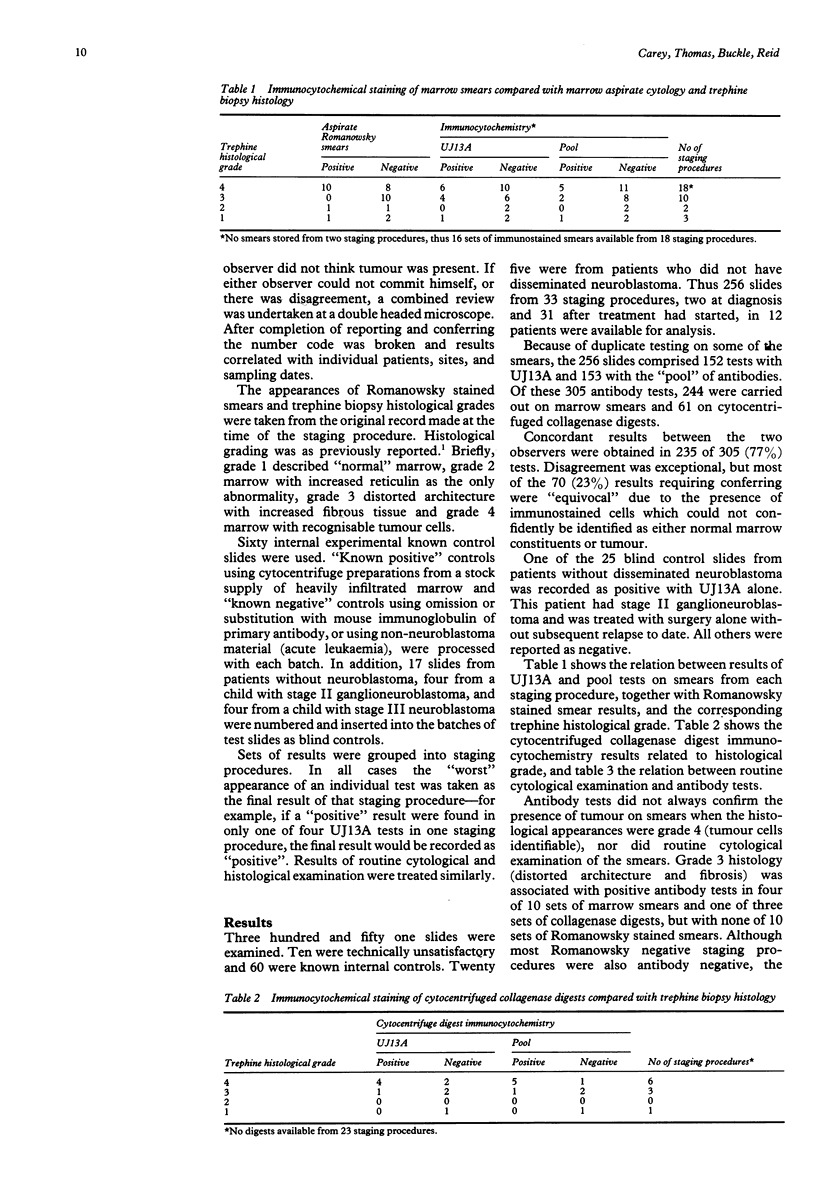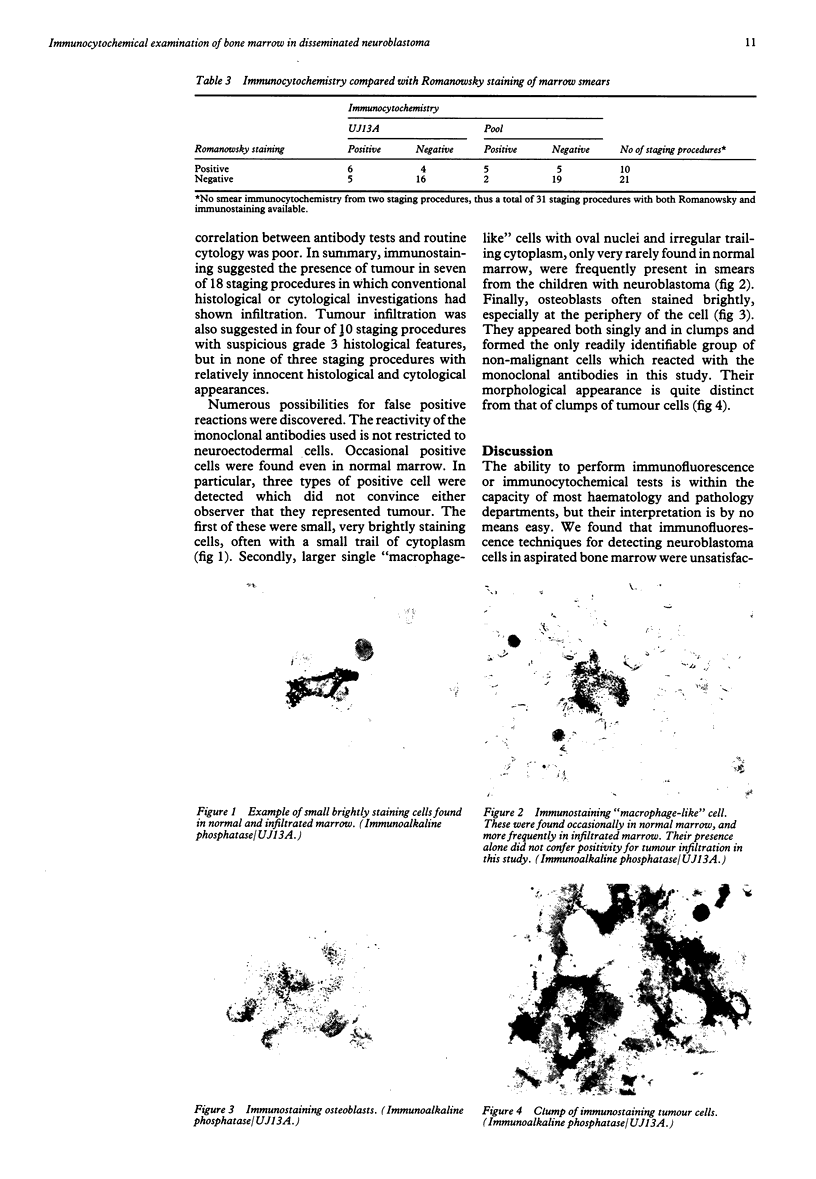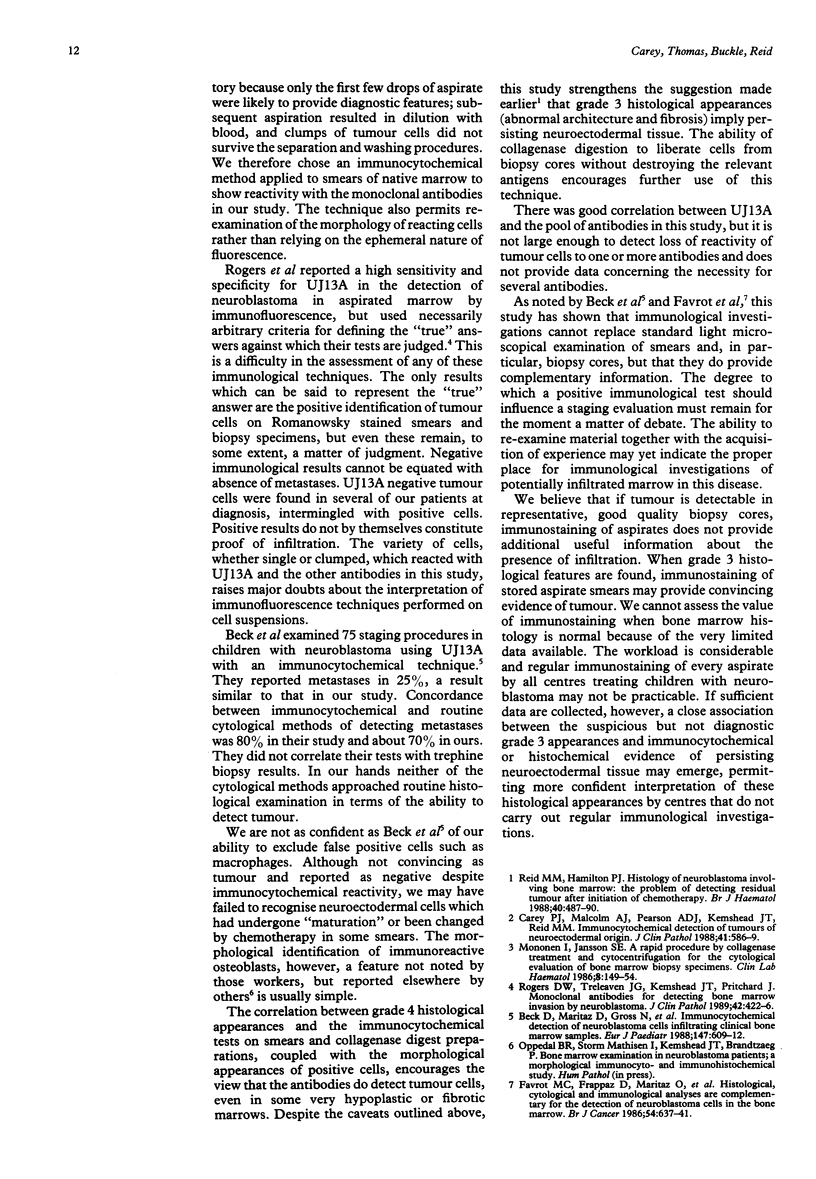Abstract
To assess the usefulness of immunocytochemical analysis of bone marrow in patients with neuroblastoma, marrow smears from 33 staging procedures in 12 patients were examined using an indirect immunoalkaline phosphatase technique with monoclonal antibodies raised against human neural tissue. Marrow aspirate and trephine collagenase digest specimens from individual sites were each tested with the monoclonal antibody UJ13A and with a pool of three related antibodies. The results were compared with morphological assessment of conventionally stained aspirates and trephine specimens taken at the same time. Immunostaining suggested the presence of tumour in seven of 18 staging procedures in which conventional techniques had shown infiltration. Tumour infiltration was also suggested in four of 10 staging procedures with suspicious trephine specimens, but in none of three with relatively innocent histological and cytological features. Immunological investigation provides no additional information about the presence of infiltration if conventional microscopy has shown definite tumour. When histological appearances are suspicious, immunostaining of stored aspirate smears or collagenase digest specimens may provide evidence of infiltration. There are insufficient data to comment on the value of immunostaining when conventional techniques reveal "normal" marrow, but the impression gained from this study is that immunostaining has a limited role in the detection of metastatic neuroblastoma, which yet remains to be defined.
Full text
PDF



Images in this article
Selected References
These references are in PubMed. This may not be the complete list of references from this article.
- Beck D., Maritaz O., Gross N., Favrot M., Vultier N., Bailly C., Villa I., Gentilhomme O., Philip T. Immunocytochemical detection of neuroblastoma cells infiltrating clinical bone marrow samples. Eur J Pediatr. 1988 Aug;147(6):609–612. doi: 10.1007/BF00442474. [DOI] [PubMed] [Google Scholar]
- Carey P. J., Malcolm A. J., Pearson A. D., Kemshead J. T., Reid M. M. Immunocytochemical detection of tumours of neuroectodermal origin. J Clin Pathol. 1988 May;41(5):586–589. doi: 10.1136/jcp.41.5.586. [DOI] [PMC free article] [PubMed] [Google Scholar]
- Favrot M. C., Frappaz D., Maritaz O., Philip I., Fontaniere B., Gentilhomme O., Bailly C., Zucker J. M., Gentet J. C., Kemshead J. Histological, cytological and immunological analyses are complementary for the detection of neuroblastoma cells in bone marrow. Br J Cancer. 1986 Oct;54(4):637–641. doi: 10.1038/bjc.1986.220. [DOI] [PMC free article] [PubMed] [Google Scholar]
- Mononen I., Jansson S. E. A rapid procedure, by collagenase treatment and cytocentrifugation, for the cytological evaluation of bone marrow biopsy specimens. Clin Lab Haematol. 1986;8(2):149–154. doi: 10.1111/j.1365-2257.1986.tb00089.x. [DOI] [PubMed] [Google Scholar]
- Reid M. M., Hamilton P. J. Histology of neuroblastoma involving bone marrow: the problem of detecting residual tumour after initiation of chemotherapy. Br J Haematol. 1988 Aug;69(4):487–490. doi: 10.1111/j.1365-2141.1988.tb02404.x. [DOI] [PubMed] [Google Scholar]
- Rogers D. W., Treleaven J. G., Kemshead J. T., Pritchard J. Monoclonal antibodies for detecting bone marrow invasion by neuroblastoma. J Clin Pathol. 1989 Apr;42(4):422–426. doi: 10.1136/jcp.42.4.422. [DOI] [PMC free article] [PubMed] [Google Scholar]






